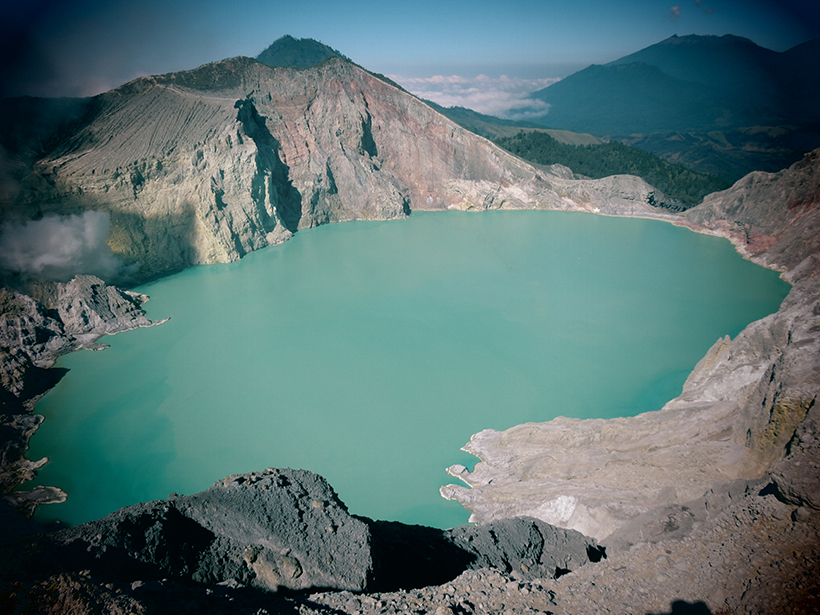Source: Geochemistry, Geophysics, Geosystems
On 27 September 2014, Japan’s Mount Ontake erupted and killed 57 people. Unlike other deadly volcanoes, magma didn’t roll down its slopes, but the eruption spewed huge plumes of ash and stones into the sky. Although these so-called phreatic eruptions can be just as dangerous as their magmatic counterparts, they often give fewer warnings and are therefore much harder to predict.
Here Tonini et al. present a new model that includes indicators of nonmagmatic unrest that might help forecast when a phreatic eruption is soon to occur. The model is the Bayesian Event Tree, a probabilistic tool that synthesizes information from multiple sources—historical records, geological data, and analytical modeling—into one complete analysis that helps scientists forecast an eruption may happen soon.
The researchers built the new model using data from Indonesia’s Kawah Ijen, an active crater lake underlain by a degassing volcano and the perfect example of a system likely to experience phreatic eruptions. Local sulfur miners are often killed by fumes of hydrogen sulfide and sulfur dioxide that vent without warning from fissures in rock. Even in less dramatic events, these poisonous gases are still concentrated enough to burn the miners’ eyes and throats and can eventually dissolve their teeth.
The team used data from 2000 to 2010 to establish a historical baseline of activity at Kawah Ijen and then analyzed the unrest events that occurred throughout the following 2 years. The model captured a swarm of earthquakes in May 2011 that suggested Kawah Ijen was about to enter a long period of unrest. Indeed, further earthquakes in October 2011 indicated that both magmatic and hydrothermal unrest was on the rise. The model retrospectively picked up on the rising probability of an eruption roughly 2 months before local authorities increased the alert level, suggesting that the model could improve the management of volcanic unrest.
With this in mind, the team has also created a software program that allows anyone to explore the event tree and visualize the results. The authors hope the program will reduce the gap between the scientific community and decision makers. (Geochemistry, Geophysics, Geosystems, doi:10.1002/2016GC006327, 2016)
—Shannon Hall, Freelance Writer
Citation:
Hall, S. (2016), A new tool to better forecast volcanic unrest, Eos, 97, https://doi.org/10.1029/2016EO055417. Published on 08 July 2016.
Text © 2016. The authors. CC BY-NC-ND 3.0
Except where otherwise noted, images are subject to copyright. Any reuse without express permission from the copyright owner is prohibited.

